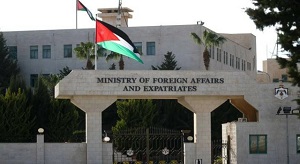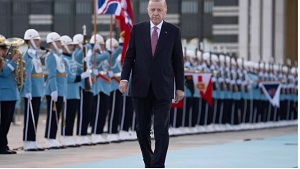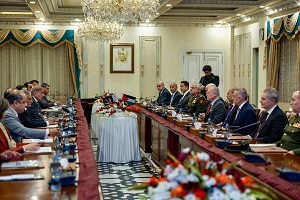Defence through offense: Israel redefines regional battlespace - By Amer Al Sabaileh , The Jordan Times
As Israeli focus intensifies on the Lebanese front, the recent remarks by Israeli Chief of Staff Eyal Zamir have come to define the contours of the next phase from Israel’s perspective. The fronts that were opened and never fully closed continue to shape the central headline of the coming stage. The doctrine of “defense through offense,” which Zamir articulated, means that the region is viewed by Israel as an open operational theater.
This does not imply classical warfronts, but rather arenas in which Israel will not hesitate to act, carrying out pre-emptive operations according to its own intelligence assessments. In practice, this means that intelligence activity will be fused with pre-emptive military action; the combat doctrine will no longer be grounded in defense but in offense. It is therefore clear that pre-emptive strikes will form the defining characteristic of the next phase—something already visible on the Lebanese front with the Israeli army’s recent exercises portrayed this new doctrine.
The declaration of this new combat doctrine comes at a moment when the fronts remain open—from Gaza to Lebanon, to Yemen and Iran—and at a time when Israeli discourse is increasingly centered on the need to strike Hezbollah’s capabilities and prevent it from rebuilding them. Israel, quite simply, cannot coexist with any risk that may evolve into an actual threat. This is what the Chief of Staff expressed succinctly: “We must not wait for an enemy attack; we must surprise it with a pre-emptive strike.”
A close reading of Israel’s security psychology after October 7 reveals the magnitude of the shifts in its approach to the regional environment. Israel now views every front as a source of threat, and every actor as a potential risk. This drives Israel to view its confrontation with the Iranian axis as unfinished—and its return as inevitable. Whether due to Israel’s conviction that the Iranian axis will eventually seek to restore its credibility after the blows it endured, or because leaving multiple fronts open and unresolved provides the axis an opportunity to strike Israel, the conclusion for Israeli strategists is the same: confrontation is inevitable and war is forthcoming, even if the prevailing assessment remains that Iran does not seek a direct war in the short term.
Yet the increasing signals of preparation across all fronts push Israel rapidly toward applying the logic of pre-emptive strikes—something already underway in Gaza, the West Bank, and Lebanon. Added to this is the fact that the Houthis in Yemen and the so-called “Iraqi Hezbollah” in Iraq are preparing for a larger confrontation, meaning they too will be approached through the doctrine of pre-emptive force and the broader strategy of defensethrough offense.
Within this military doctrine—which imposes itself as an obligatory framework for addressing the risk of a surprise attack—Israeli confrontation rests on two central pillars. The first is Israel’s need to dispel any notion that its defeat is possible; thus, Israeli action aims to prevent any threat from evolving into a point where it becomes capable of launching an offensive. The second pillar revolves around preventing the crisis from shifting into Israel’s borders, meaning the adversary must be denied the opportunity to strike inside Israel. Consequently, the Israeli strategy does not stop at intercepting a potential attack; it seeks to shift the battle onto the adversary’s terrain.
This announcement of the “defense through offense” doctrine comes as the region enters the second phase of escalation. It effectively grants Israel permission to operate in any geographic area it deems necessary and provides a green light for continuous targeting of locations and individuals it considers potential threats. This means we are looking at a policy aimed at keeping open fronts in a permanent state of war: from Gaza—where Israel seeks to destroy the remaining tunnels and eliminate Hamas’s residual capabilities—to the West Bank, and finally to Lebanon, which remains the most visible arena for translating this strategy at this stage.
Nevertheless, it is essential to consider that this strategy applies primarily to Syria, which remains for Israel an exposed geography, treated as a perpetual source of threat. Whether its current leadership is rehabilitated to play a role in confronting ISIS, Iran, and Hezbollah or not, pre-emptive thinking dictates that trust in any actor remains extremely limited, while suspicion remains exceptionally broad. This places Syria at the heart of Israel’s calculations, regardless of how circumstances shift or alliances evolve.
Latest News
-
 Jordan condemns Israeli minister’s calls to target Palestinian leadership
Jordan condemns Israeli minister’s calls to target Palestinian leadership
-
 Turkey seeks to host next COP as co-presidency plans falter
Turkey seeks to host next COP as co-presidency plans falter
-
 ‘Israel’ open to US F-35 sale to Saudi if it brings normalization: Axios
‘Israel’ open to US F-35 sale to Saudi if it brings normalization: Axios
-
 "Israeli tank fires near our forces in Lebanon," UNIFIL
"Israeli tank fires near our forces in Lebanon," UNIFIL
-
 King meets with Pakistan PM in Islamabad, emphasises importance of expanding cooperation
King meets with Pakistan PM in Islamabad, emphasises importance of expanding cooperation